| # | Depart on | Type | Price USD per person | Remark |
|---|---|---|---|---|
| 1 | Mar 27, 2026 | Double room | $ 3399 | |
| 2 | Mar 27, 2026 | Single room | $ 4349 |
Departure Date:2026: March 27
Price:$3,399/person (twin room) $4,349 (single room)
Price Description: Double Room: 2 guests per room. Single Room: 1 guest in a standard room
Attention: this itinerary document is for reference only. Our company reserves the right to adjust the sequence and individual attractions in the itinerary based on season and time. All itineraries are subject to confirmation before departure. Updated on: June 25, 2025

Highlights
[All-Inclusive] Premium accommodations + Local excellent guides + All meals +Entry to all featured attractions +Bhutan visa fees covered.Hassle-free luxury from start to finish.
[Exclusive Privilege] Complimentary round-trip economy airfare (taxes included) between Kathmandu and Paro.Traverse the majestic Himalayan skies!
[Curated Accommodations] 4 nights in 5-star luxury hotels in Nepal + 1 night in a 4-5 star cloud-view resort in Nagarkot + 5 nights in 4-star zen Sanctuaries hotels in Bhutan
[Gourmet Indulgence] Upgraded meal standards + special dinner at a premium Nepali restaurant, a dual elevation from flavor to ritual;
[Seamless Extensions] Pre/post-tour transitions available to: Northern & Southern India, Sri Lanka.
Traversing Two Hidden Realms · Decoding the Dual Poetry of Faith & Nature
Bhutan: Seeking True Happiness Between Snow Peaks and Faith
◆ Taktshang Goemba: Ascend to this "Top 10 Sacred Wonder" perched on cliffs;
◆ Ancient Spiritual Treasures: Explore Bhutan's oldest Kyichu Lhakhang & most beautiful Punakha Dzong;
◆ Dochula Pass Pilgrimage: Walk among 108 sacred stupas, gaze at Himalayan peaks through prayer flags;
◆ Punakha Chronicles: Wander the ancient capital, decipher dynastic epics in traditional rammed-earth architecture.
◆ Serene Gantey Valley Hike — Traverse terraced fields & prayer flag clusters, immersing body and soul in the Himalayan alpine forest therapy~
Paro Tsechu: When the Thunder Dragon Dances—Masked Deities Awaken Sacred Peaks
◆ Monks in ritual masks dispel evil and invoke blessings ◆ Communities in vibrant attire dance in unison - Immerse in Bhutan’s most awe-inspiring spiritual celebration!
Kathmandu: Millennia-Old Buddhist Kingdom Reborn
◇ Durbar Squares: Twin UNESCO heritage tours (Kathmandu + Bhaktapur);
◇ Swayambhunath Sunset: Share golden hour with mischievous monkeys at Monkey Temple;
◇ Boudhanath Meditation: Circumambulate Asia's largest stupa beneath all-seeing eyes;
◇ Thamel Immersion: Hunt handicrafts, sip authentic masala chai in vibrant alleyways.
Nagarkot: Snow Mountain Panorama Feast Above the Clouds
◆ Stay at 360° view hotels—witness Everest's sunrise/sunset in a celestial spectacle, feasting your eyes on Himalayan giants.
Chitwan: Wild Encounters in Primeval Jungles
◇ Canoe through crocodile lakes + Jeep safari for wildlife tracking + Tharu village immersion + Guided jungle trekking
Lumbini: Strolling Through Buddha's Sacred Grounds
◆ Find inner peace under the sacred Bodhi tree at Maya Devi Temple—where Prince Siddhartha's birth ignited spiritual awakening.
Today you will go to the airport to check in for your flight to Katmandu, the capital of Nepal. Due to the time difference, it is recommended to confirm the local time and depart 1 day in advance, the exact time is subject to the arrival time. You will be spending the night on the plane, which may be cold, so it is recommended that you bring warm clothing. We wish you a good night's rest.
Upon arrival at Kathmandu's Tribhuvan International Airport today, the guide will greet you with traditional marigold garlands and blessings – immersing you in Nepal's warm welcome ritual – before transferring you to the hotel for rest.
Kathmandu unveils itself as a city where medieval charm harmonizes with modern life, nestled among hills and rivers with breathtaking views. Its unique geography gifts it eternal spring: sheltered from northern winds by the Himalayas' southern slopes while catching warm Indian Ocean breezes from the south. This blessed location crowns it a world-renowned destination.
Attention: Free pick-up time on the day of the tour is a fixed time (In case of changes, please communicate with customer service staff in advance, other different times for paid pick-up, please know!) Thank you for your understanding.
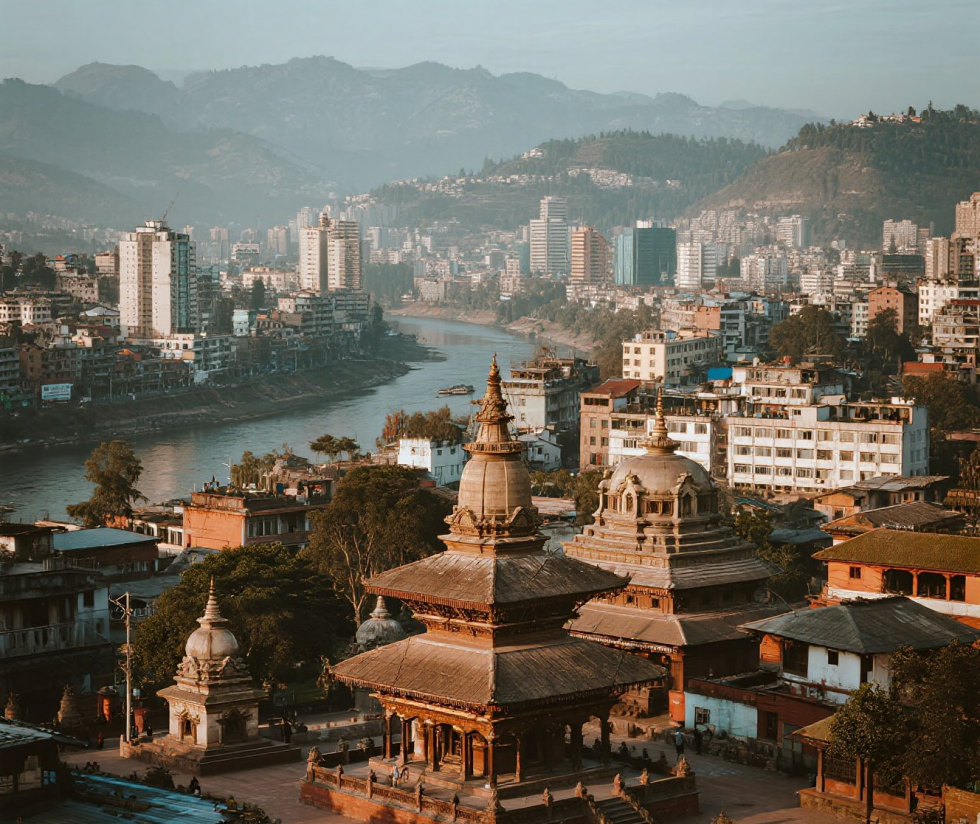
Reference Flights:KB401 08:45—10:20 or KB205 14:35—15:50
Itinerary: Paro Tshechu →Tashichho Dzong → King’s Memorial Chorten → General Postal Office → Handicrafts Mall & Farmers Market
[Paro International Airport] Bhutan’s sole international airport. The Kathmandu-Paro flight offers the most dramatic Himalayan views of any air route. Upon arrival, your Bhutanese guide will present you with a "Tashi Khaddar" (white ceremonial scarf) – a traditional welcome gesture.
Upon arrival, the tour guide will lead you to the venue of the Tshechu Festival.
Paro Tshechu
Held annually from March 29th to April 2nd over five days, this festival is one of Bhutan's most distinctive and grandest Buddhist celebrations. It honors Guru Rinpoche (Padmasambhava), the revered Buddhist saint, serving as a vital way for Bhutanese people to express their devotion to him and to pray for blessings, happiness, and favorable rebirth. The festival commences with a series of Cham dance performances. Cham is a spectacular and dramatic masked dance performed by dancers wearing intricate masks and vibrantly colored robes. The dances depict stories of saints subduing demons or portray significant historical events. Bhutanese believe that witnessing these dances brings blessings and spiritual insights. On the final morning of the festival, the Thongdrel ceremony takes place. A gigantic thangka (sacred tapestry) portraying Guru Rinpoche is unfurled. This thangka is called a "Thondrol," meaning "liberation upon seeing," and it is believed that merely beholding it cleanses sins. Adding to the festive atmosphere, masked clowns known as "Atsaras" roam the grounds. Often wielding wooden phalluses, they perform humorous and lively antics, entertaining the crowd while also helping to maintain order.
Afterwards, take bus to Thimphu, the capital of Bhutan (altitude: 2,320 meters) (55 kilometers / about 1.5 hours' drive).
Upon arrival, visit [Tashichho Dzong] – Thimphu’s majestic fortress-monastery serving as Bhutan’s administrative heart. Blending royal authority with monastic sanctity, it houses: Offices of His Majesty the 5th King, Ministries of Home & Finance, Summer residence of the Central Monastic Body.
Visit [King’s Memorial Chorten]: Iconic monument envisioned by His Majesty Jigme Dorji Wangchuck (3rd King, "Father of Modern Bhutan") to honor world peace and prosperity. The most frequented site in Thimphu for daily circumambulation rituals.
Head to Bhutan's General Postal Office. Diverse stamps are a major feature of Bhutan, which has always led the world in stamp design, printing, and material diversity, winning multiple awards at international philatelic exhibitions. Bhutan still holds the world record for the most stamps printed with special materials, including unique CD stamps and 3D stamps. Here, you can customize stamps with your own portrait.
If time permits, visit the Handicrafts Mall, a government-operated enterprise showcasing Bhutan's excellent traditional arts. Here, you can purchase handwoven textiles, thangka paintings, masks, ceramics, stone carvings, woodwork, jewelry, and other interesting items made from local materials.
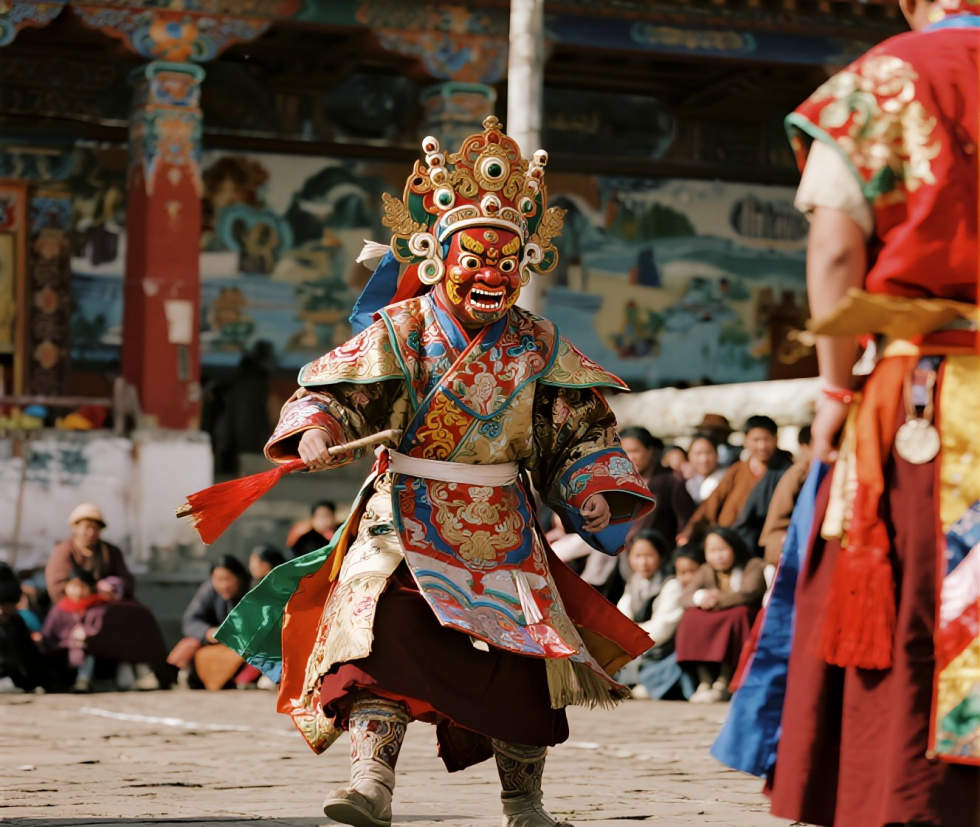
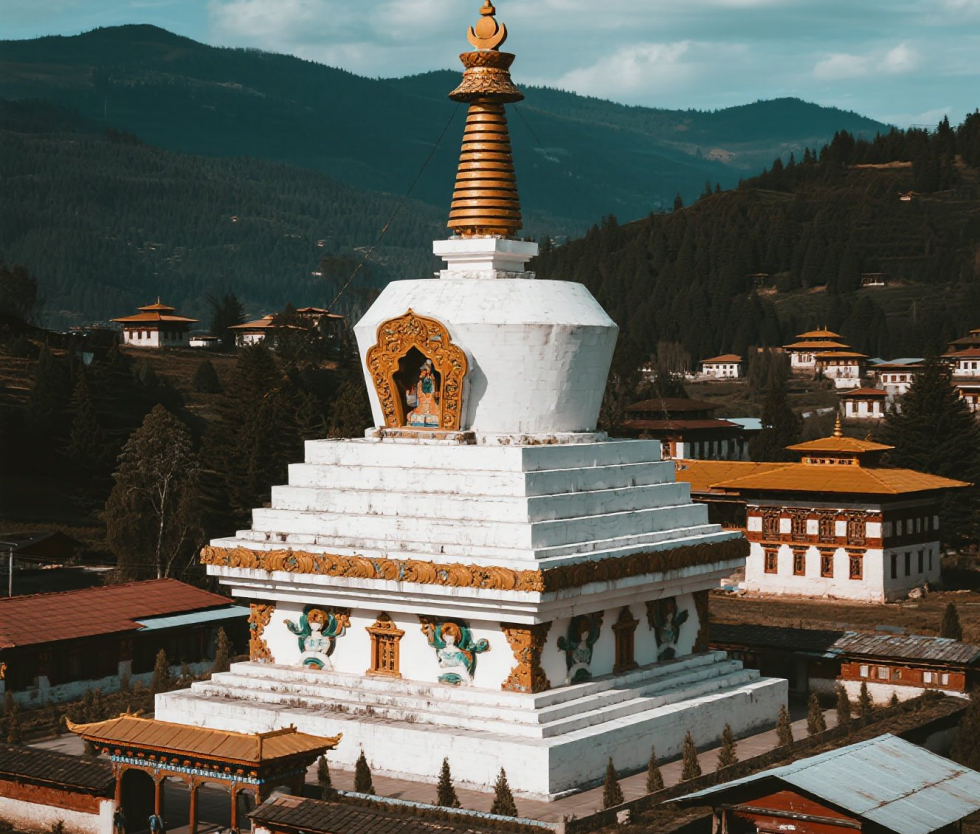
Itinerary: Takin Zoo - Buddha Dordenma Statue - Dochula Pass - Phobjikha Valley - Gangte Goemba
After breakfast at the hotel, visit the Takin Zoo. The takin (Pakin in Dzongkha, the national language of Bhutan) is Bhutan's national animal, similar to China's giant panda. As an endangered protected species, there are approximately 8,000 takins surviving in Bhutan, Nepal, Myanmar, and China. Today, the Thimphu Zoo is the best place to observe takins. In addition to takins, it also houses various deer species such as reindeer and muntjacs.
Proceed to visit the Buddha Dordenma Statue, the largest seated Buddha statue in South Asia and one of the largest in the world. From here, you can overlook the entire Thimphu Valley.
Then drive to Wangdue Phodrang (altitude: 1,240 meters), taking a short break at the 3,140-meter Dochula Pass. Here, you can admire the most magnificent scenery of the eastern Himalayas and photograph the 108 Chortens, also known as the Druk Wangyal Chortens. Built in 2005, they commemorate those who lost their lives in suppressing the Assamese rebel forces in southern Bhutan and pray for world peace. Colorful prayer flags line the route.
Afterwards, proceed to Phobjikha Valley (also known as Gangtey Valley), named after the renowned Gangtey Monastery. The valley, at an altitude of nearly 3,000 meters, belongs to the alpine cold zone. With its bowl-shaped terrain and broad vision, it harbors rare valley glaciers in the country. In winter, the valley is covered by deep snow, while in summer, it turns into a green expanse with gurgling streams forming low-lying marshes, making it an ideal habitat for black-necked cranes. From mid-October to December each year, about 400 black-necked cranes migrate southward from the Qinghai-Tibet Plateau to Phobjikha Valley, where they nest, mate, and give birth, departing in April of the following spring.
Gangte Goemba (Gangtey Monastery), perched on a mountaintop and surrounded by lush trees, enjoys a serene environment and belongs to the "Nyingma School" (commonly known as the "Red Sect") of Tibetan Esoteric Buddhism. The monastery was personally sited by Pema Lingpa, a treasure revealer of Padmasambhava, and constructed by his grandson Pema Tingley in 1500. Thus, Pema Tingley became the first Gangtey "Tulku" (meaning incarnation or reincarnation). The current Gangtey Tulku, born in 1955, is the ninth reincarnation.
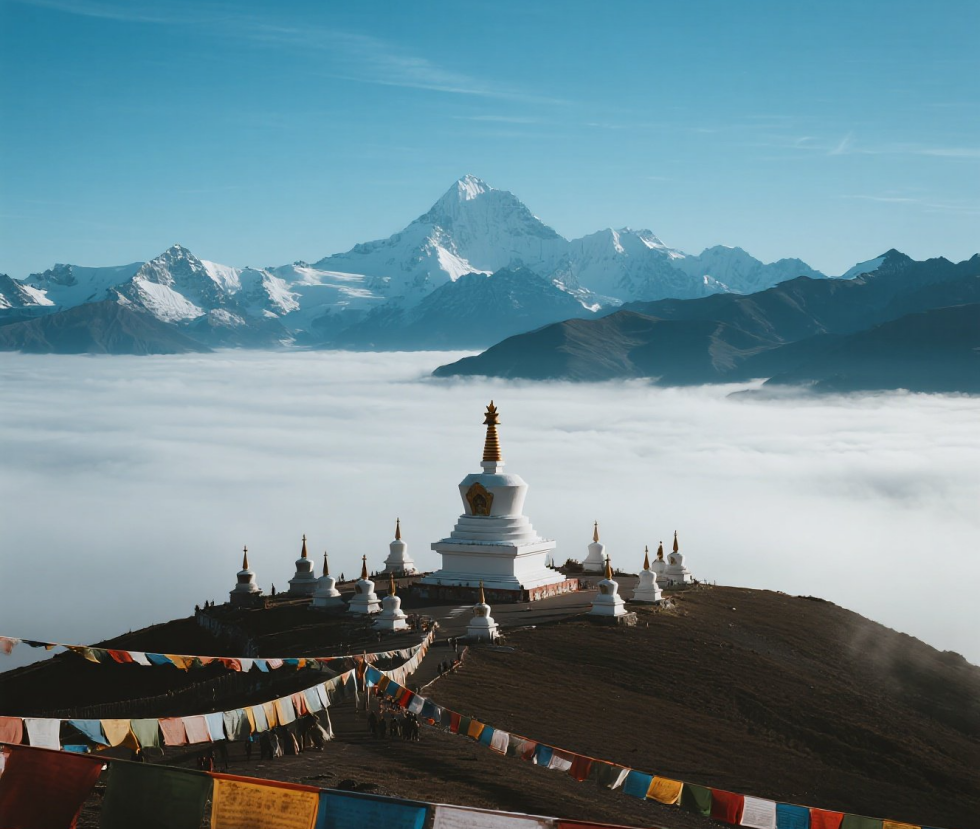
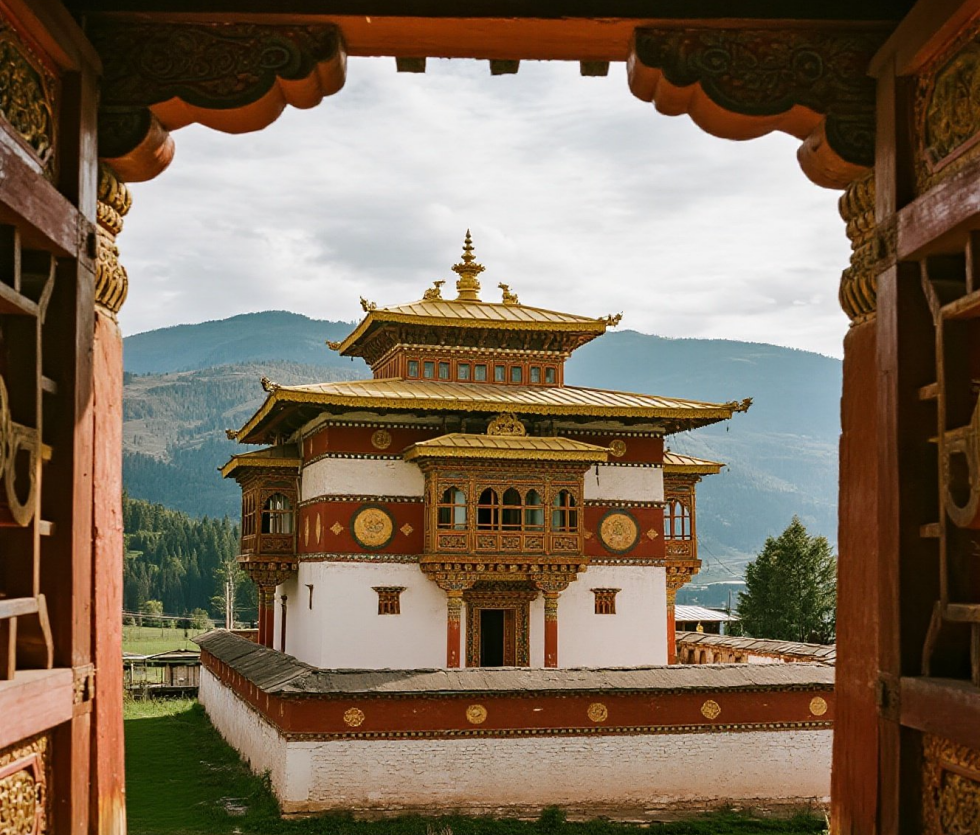
Itinerary: Gangtey Nature Hiking Trail - Village - Wangdue Phodrang - Chimi Lhakhang - Punakha Dzong
After breakfast, head to the Gangtey Nature Hiking Trail (5.5 km distance, approx. 2 hours, difficulty level: easy).
Experience the natural scenery of Phobjikha Valley. Start from the small hilltop overlooking Gangtey Monastery, descend through flower-covered grasslands to Semchubara Village, then traverse a beautiful forest and enter the open valley.
Afterwards, continue driving to Punakha, passing through Wangdue Phodrang en route. Here, you can visit the local market and explore the newly developed town. The Wangdue Phodrang area is also renowned for bamboo products, slate, and stone carvings.
Continue to Punakha (the former capital of Bhutan, altitude: 1,250 meters). En route, visit the Chemiracon, located on a small hill in the center of the valley and also known as the Fertility Temple. It is widely believed that couples without children who pray here often conceive quickly. The path passes through rice fields to a small village called Pana, meaning "field." Walking through the village near the temple allows you to observe the daily life of local villagers up close.
Visit the Punakha Dzong at the confluence of the Father River and Mother River. Built by Shabdrung Ngawang Namgyal in the 17th century, it is Bhutan's second fortress and now the winter residence of the Je Khenpo (religious leader). The hall features huge golden statues and murals depicting the life of Buddha. Recognized as the most beautiful dzong in the country, it is particularly stunning in spring when the jacarandas surrounding it bloom in blue-purple.
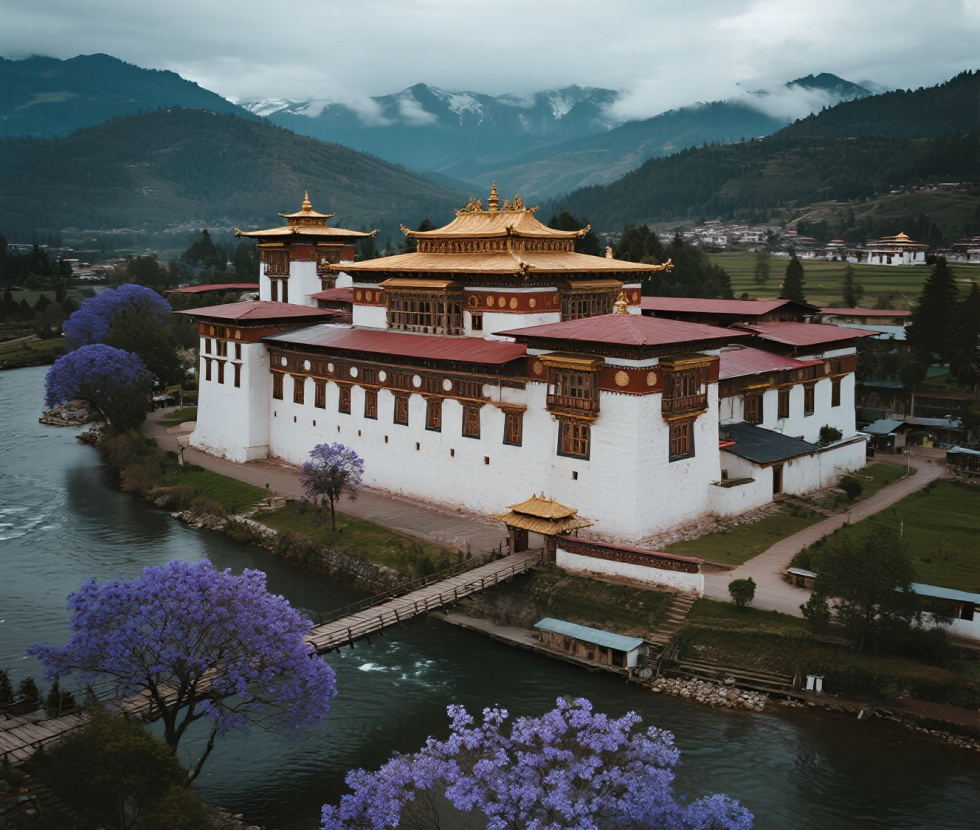
Itinerary: Handmade Paper Mill → Paro Tshechu →National Museum (Ta Dzong) → Paro Dzong (Rinpung Dzong)
After breakfast, drive to Paro and visit the Handmade Paper Mill en route, where authentic Bhutanese paper, known as Deh-sho, is produced using traditional methods. This paper is entirely made from the bark of native plants—boxwood and Dekap trees—with the intricate production process passed down through generations. Witness the entire process of handmade paper production using traditional techniques. You can even try this ancient craft and make some paper of your own as a souvenir. Originally, Deh-sho paper was used by monasteries for woodblock prints, manuscript books, and writing prayer books.
Afterwards, proceed to Paro, where the tour guide will lead you to visit the venue of the Paro Tshechu Festival.
Then drive to Paro and visit the Ta Dzong, which historically served as a watchtower for Paro Dzong and is now converted into Bhutan's National Museum. The museum's circular design is said to resemble a conch shell, a sacred Buddhist artifact. Spanning 6 floors, it houses a vast collection of thangka paintings, textiles, weapons, armors, household items, and a diverse range of natural and historical relics, offering insight into Bhutan's artistic and historical legacy.
After touring Ta Dzong, follow a path to visit the Paro Dzong (Rinpung Dzong), meaning "Fortress on a Heap of Jewels". Built in 1644, it is Bhutan's most iconic monastery and currently serves as a government office, Paro's courthouse, and a religious association. The wooden corridors lining the inner courtyard feature exquisite murals depicting Buddhist legends, blending architectural grandeur with spiritual artistry.
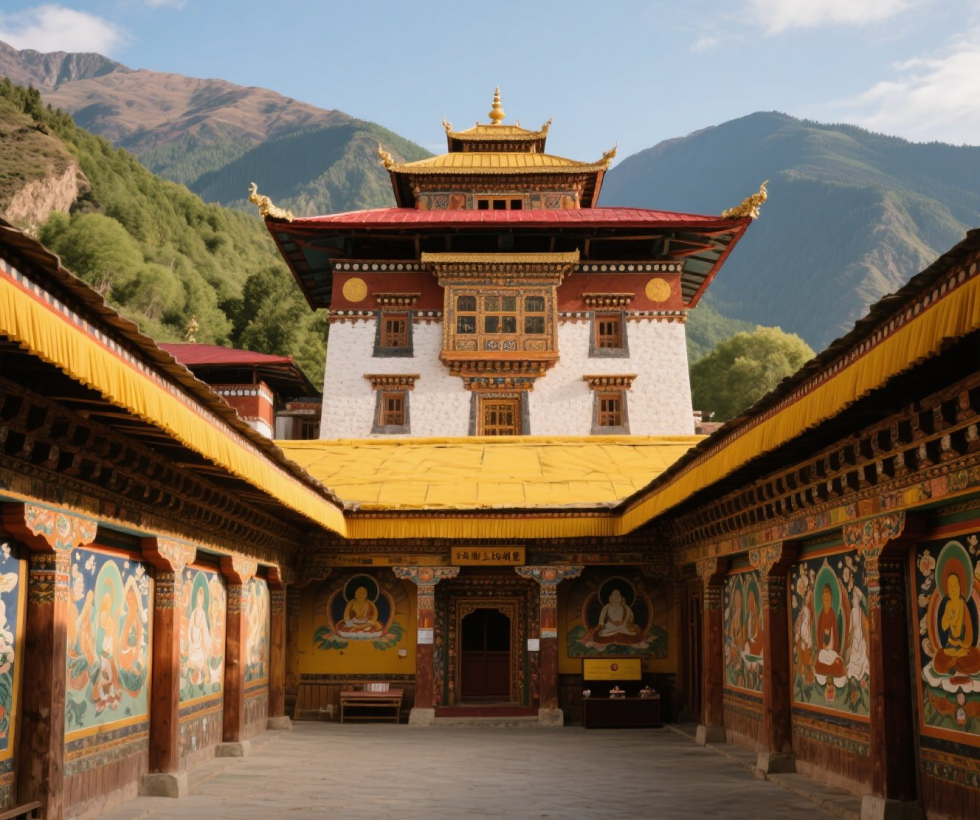
Itinerary: Paro Tshechu→ Taktsang Monastery (Tiger’s Nest) → Kyichu Lhakhang
In the morning, the tour guide will lead you to the venue of the Paro Tshechu Festival. Today is the last day of the festival, and a grand Thongdrol (Buddha Display) ceremony will be held at Paro Dzong. Local people in Paro will dress in splendid attire, gather at the Thongdrol site, watch this spectacular sacred object, enjoy the masked dances, and participate in this grand and solemn festival.
The ceremony on the last day of the Tshechu Festival consists of three parts:
1.Display of the Giant Thangka: The thangka display starts at 3 a.m. and continues until around 9 a.m. People fortunate enough to witness this grand event are believed to accumulate immeasurable merit. The entire thangka is then slowly rolled up, escorted back to Paro Dzong, and stored until the next Tshechu Festival.
2.Masked Dances (Divine Dances): Masked dances are one of the main features of the Tshechu Festival, performed by monks and the public wearing traditional costumes and masks. The dances depict events from the life of the 8th-century sage Padmasambhava, primarily illustrating the victory of good over evil. Bhutanese believe that by watching the dances, they can receive divine blessings, enlightenment, and purification.
3.Clowns (Atsaras): Known as "Atsaras," these clowns are notable for their large red noses. Their humorous and lively performances entertain the audience while maintaining order. Viewers can approach them and offer alms. They make exaggerated gestures to amuse guests, creating a relaxed festival atmosphere.
Afterwards, proceed to the Taktshang Monastery or Tiger’s Nest (approx. 5 hours round-trip hiking). Perched on a cliff 900 meters above the Paro Valley, this spectacular monastery is revered as a holy site—legend has it that Guru Rinpoche arrived here on a female tiger to meditate, drawing pilgrims from across Bhutan. Starting from the foot of the cliff, the hike to the monastery takes 2 hours. For those unable to hike, horseback riding is available at an additional cost. Lunch is served at a simple cafeteria halfway up the mountain, and the descent also takes about 2 hours.
Next, visit the 7th-century Kyichu Lhakhang, Bhutan’s oldest temple built by Tibetan King Songtsen Gampo, marking Buddhism’s introduction to Bhutan.

Reference Flights:KB400 11:00—12:15
Itinerary: Boudhanath Stupa - Monkey Temple (Swayambhunath)-Durbar Square-Kumari Temple-Thamel
After breakfast, take a flight back to Katmandu. Upon arrival, you will be greeted by a Chinese-speaking tour guide.
Visit Boudhanath Stupa, the largest stupa in the world. Built in the 5th century, it is now the best place to observe Tibetan lifestyle, culture, and monastic religious activities. The stupa is 38 meters tall and 100 meters in diameter, making it the largest circular stupa in the world. On the grand white dome stands a square tower, with huge Buddha eyes painted on all four sides, symbolizing the boundless reach of Buddhist law and the all-seeing wisdom of the Buddha. Boudhanath Stupa is one of the cultural epitomes and heritage sites of the Kathmandu Valley.
Visit the Monkey Temple (also known as Swayambhunath), built on a hilltop west of Kathmandu. From the summit, you can overlook the entire Kathmandu Valley. This important Buddhist pilgrimage site stands out as the oldest relic in the Kathmandu Valley. According to legend, Sakyamuni himself once visited this place, and a grand religious ceremony is held here every year on the Buddha's birthday.
With a history of over 2,000 years, it is one of the oldest temples in Asia, named for the numerous monkeys inhabiting it. The overall architecture exudes a rich ancient charm, with extremely intricate window decorations on the residential houses. The combination of temples, stupas, bronze ornaments, flocks of pigeons flying to and fro, and groups of monkeys leaping around forms a unique landscape.
Visit the Kathmandu Durbar Square (World Cultural Heritage), a hub of ancient architecture featuring palaces, courtyards, and temples. Referred to as a "museum of temples" due to its 50+ religious structures, key attractions include: Kasthamandap, Ashoka Binayak Temple, Taleju Temple, Kumari Temple, Hanuman Dhoka Palace,etc. Kumari Temple (Living Goddess Temple): Home to a 9-year-old girl chosen through strict rituals as the earthly incarnation of the goddess Taleju. The temple’s resilience during the 2015 8.1-magnitude earthquake is regarded as a miracle.
Later: Free time at Thamel, Kathmandu’s bustling hub packed with: Guesthouses, Bars ,Bookshops, Craft stalls,Travel agencies ,Global eateries.
Evening: Savor authentic Nepali cuisine with traditional cultural dance performance.
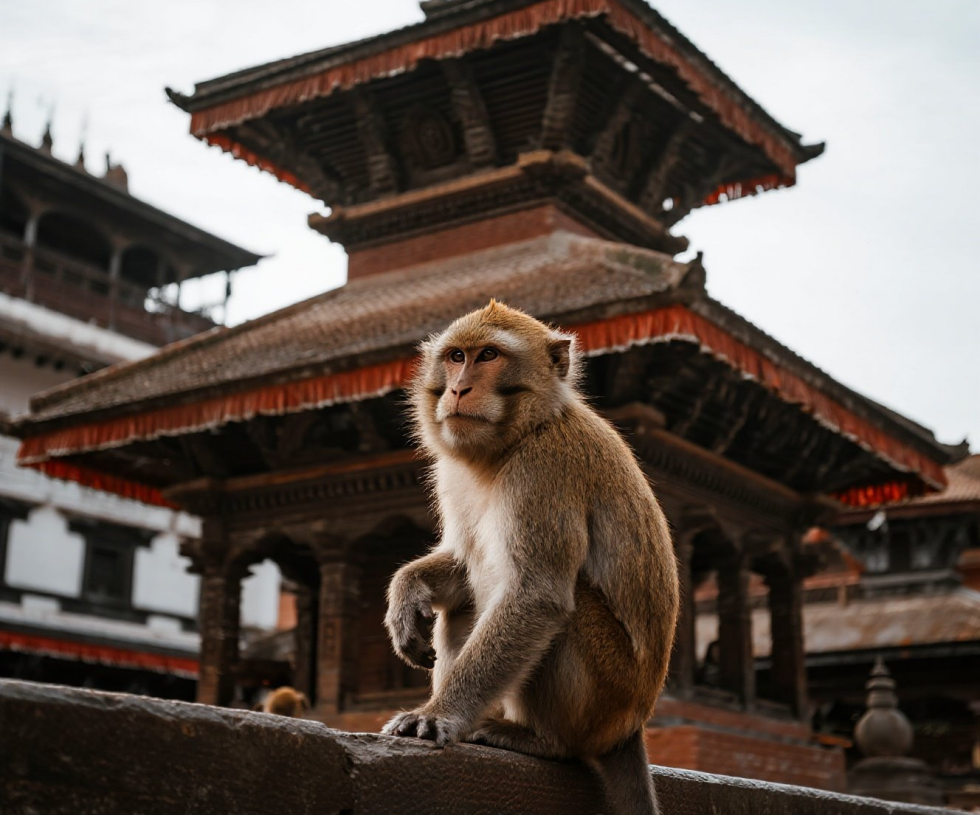
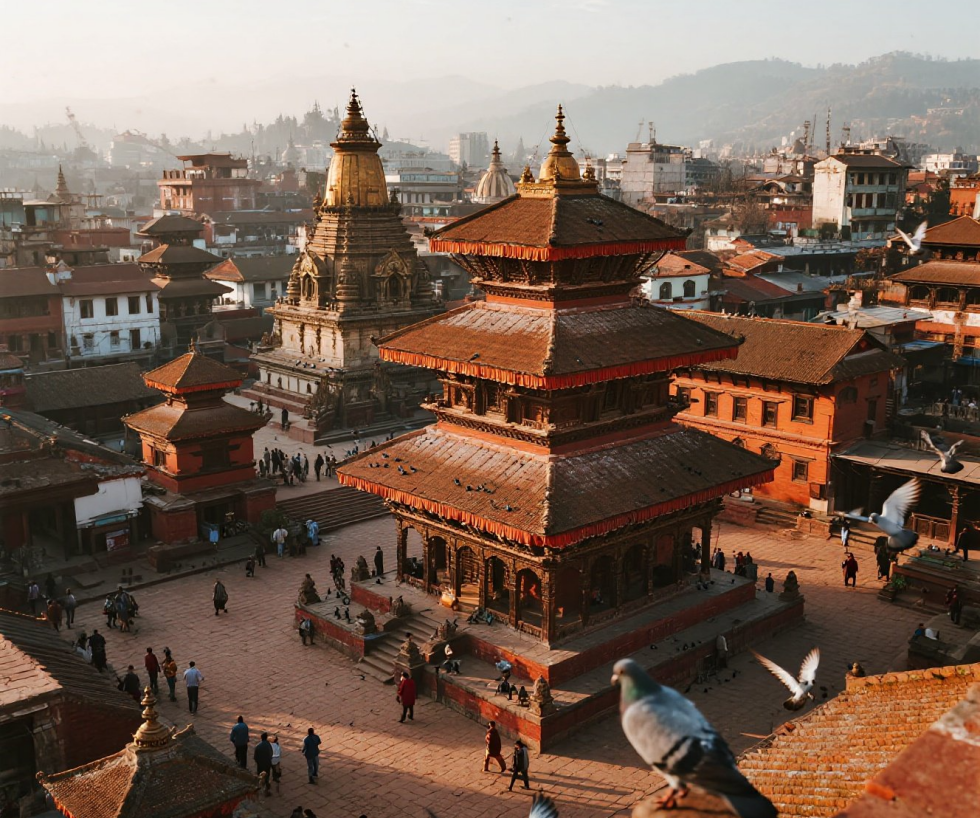
Itinerary: Kathmandu - Pokhara
After breakfast, drive to Pokhara, a resort known as the "Swiss of the East," which is deeply loved by tourists from around the world. Along the way, enjoy views of rivers, terraced fields, and the charming Annapurna and Manaslu mountain ranges. In the afternoon, go boating on the beautiful Phewa Lake and visit the temple on the lake's central islet. Phewa Lake is the second most important attraction for vacations in Pokhara. Located south of the city center, its surrounding area combines a tourist district, bar street, and shopping street, making it a popular spot for visitors. For a lazy experience, take a small boat ride on Phewa Lake: the clear water, honest Nepali boatmen, and the boat gliding quietly on the dreamlike lake—an unforgettable memory for every visitor to Pokhara.
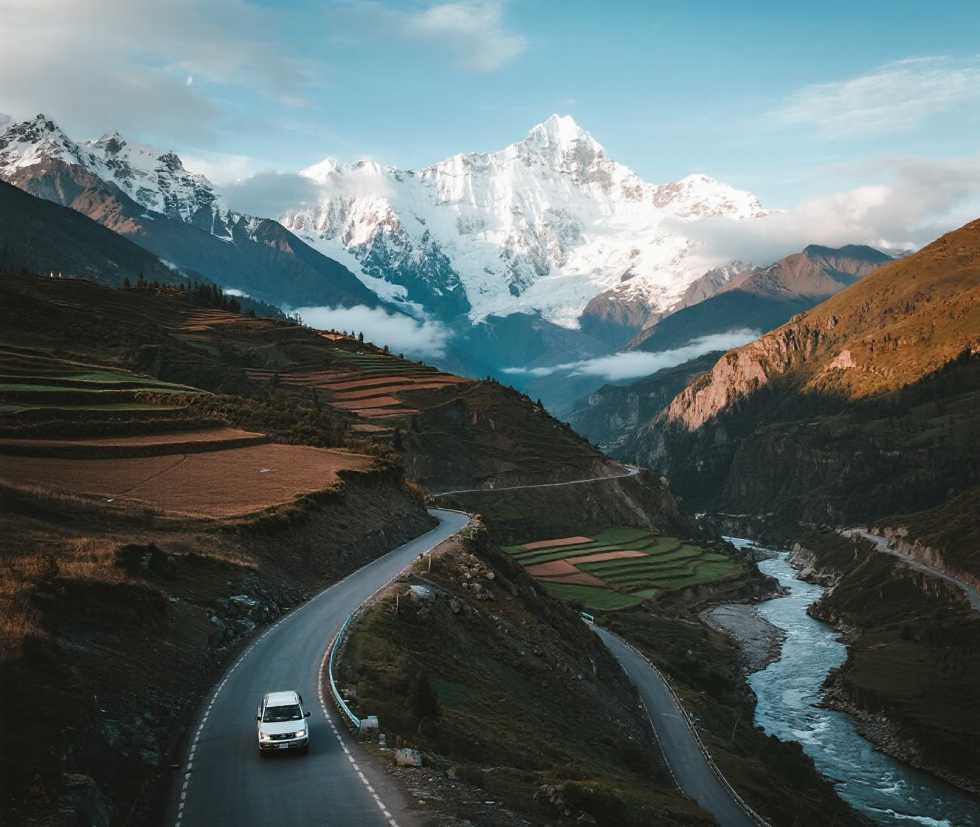
Pokhara is a resort destination known as the "Switzerland of the East". At an altitude of over 900 meters, this place is deeply loved by tourists from all over the world.
Before dawn, drive to Sarangkot to enjoy the most charming sunrise panorama of the Annapurna Range, Dhaulagiri Peak, and Manaslu Range. Return to the hotel for breakfast.
Visit Bindhabasini Temple, located in the center of the bazaar and dedicated to Goddess Durga, the supreme deity of power. This 16th-century structure will surely make you linger.
Davis Falls is actually an underground waterfall. Water flows from a natural tunnel formed by underground currents, 500 feet away from the waterfall.
Head to Mahadev Cave, also known as Gupteshwor Cave, a limestone cave enshrining Lord Shiva. It is said to have been discovered in the 16th century. Stand on the summit of Mahendra Pul to overlook Seti Gorge. The river flows through the city, with some sections entirely underground. Additionally, visit the World Peace Pagoda perched at 1,100 meters on Anadu Hill.
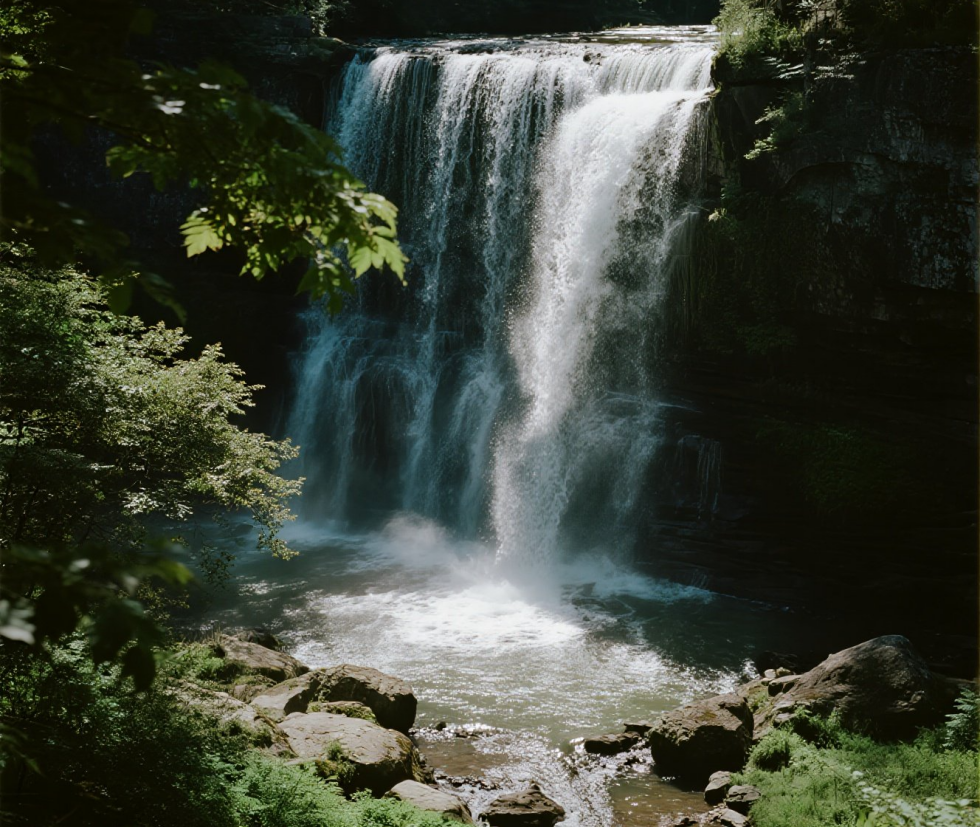
IAfter breakfast, transfer back to Kathmandu.
Upon arrival, visit the Bhaktapur Durbar Square (World Cultural Heritage), known as the "City of Pilgrims" and "City of Temples," a gem of Nepal's cultural heritage. Explore ancient architectural masterpieces such as the 55 Window Palace, Batsala Devi Temple, Nyatapola Temple, and Malla King Statue Pillar, immersing yourself in the splendor of Nepalese medieval art. Stop by the Pottery Square to watch local craftsmen create traditional pottery, a living demonstration of ancient craftsmanship.
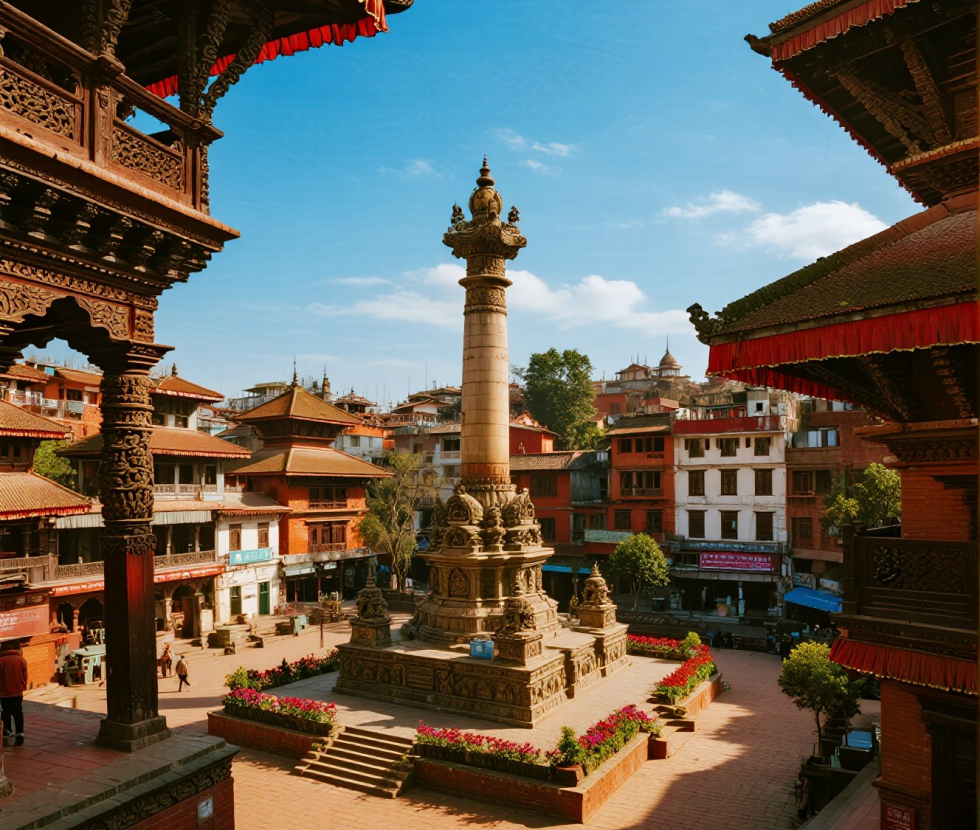
After breakfast, you will be transferred to the airport for an international flight back home to end this wonderful trip to Nepal and Bhutan.
1. Hotel and breakfasts included in the itinerary: Nepal 5*, Bhutan 4*
2. Vehicle fees for items included in the itinerary (with comprehensive insurance).
3. Meals listed in the itinerary (18 lunches & dinners + 10 breakfasts)
4. Local excellent guide
5. First-entrance tickets to the scenic spots listed in the itinerary.
6. Round-trip economy class tickets and taxes between Kathmandu and Paro.
7. Bhutanese e-Visa application fee (applicants need to prepare the materials themselves).
8.Sufficient mineral water per person per day.
1. Mandatory payment of $500/person, to be paid together with the tour fee when booking the tour:
The fee includes: Bhutan National Tourism Sustainable Development Fee (SDF) at $100 per person per night for 5 nights.
2. Peak Season Surcharge: An additional $100/person is required during the Tshechu Festival period.
3. Single room supplement.
4. International round-trip airfare.
5. Nepal visa: On-arrival visa is available. Fill out the application form in advance on the official website of the Nepali Immigration Office, and it is recommended to print it out. After arrival, bring the application form and original passport to the designated counter in the immigration hall of Kathmandu Airport to obtain the on-arrival visa (currently free for Chinese passports, approximately $30 for other passports)
6. Tips for driver and guide: $12/person/day, total $156/person.
7. Personal expenses abroad (including but not limited to laundry, phone calls, faxes, pay-TV, beverages, and other personal costs at hotels)
8. Luggage storage fees and overweight baggage charges
9. Other expenses not mentioned in the above service inclusions
10.Additional expenses caused by force majeure circumstances beyond our control, such as strikes and transportation delays
Special Notes:
1. The sequence of the itinerary, attractions, flights, and accommodation locations may be subject to temporary changes, modifications, or substitutions. The final itinerary will be confirmed by our company before departure.
2. Our company reserves the right to modify the itinerary and add additional charges due to factors such as airlines, visa issues, government regulations, weather conditions, and other unforeseen circumstances.
3.The flight numbers and times listed in the itinerary are for reference only and may be reasonably adjusted according to actual conditions.
Travel Instructions
① All participants in the tour group must assemble and depart on time. Please arrive at the pick-up location 15 minutes in advance. Our company's tour bus will not wait for latecomers. If you fail to join the group at the agreed time and location, or are unable to catch up en route, it will be considered as an automatic waiver of the trip, and no refunds will be given.
② The pick-up and drop-off times indicated in the tour notification are estimated. The specific locations for boarding and alighting will be confirmed by our company. (In case of traffic conditions or other special circumstances that prevent our bus from arriving at the pick-up location on time or if there is a temporary change in schedule, our company will notify you promptly. Please wait patiently.)
③ There are three types of buses: large buses, minibuses, and 9-seater vans. Generally, large buses have dedicated luggage compartments for storing baggage, while minibuses and 9-seater vans have relatively smaller spaces for luggage storage. Given the limited space in the bus compartments, we recommend that you travel with as little luggage as possible. Our company will arrange the appropriate vehicle based on the final group size to ensure that each person has a seat.
④ To avoid excessive congestion at tourist attractions, in most cities, the parking spots for tour buses are located farther away from the attractions. Drivers are not allowed to park indiscriminately, as violations will result in hefty fines. Therefore, the boarding and alighting locations may be a certain distance from the attractions. We ask for the understanding of all group members.
Safety Tips for Traveling by Tour Bus:
① Smoking is strictly prohibited inside the bus.
② Do not carry any prohibited items.
③ Do not tamper with any objects on the bus to avoid unnecessary damage.
④ During temporary stops, please follow the arrangements of the tour guide and do not wander off.
⑤ When getting off the bus for sightseeing, dining, or shopping, please make sure to close the bus windows and take your valuables with you. The travel agency will not be responsible for any loss or theft.
⑥ Given the long travel time and heavy load on the vehicle, if the bus breaks down and affects the itinerary, the travel agency will take prompt remedial measures. Please cooperate fully.
Cancellation and Amendment Policy
Cancellation Terms:
(1) If canceled more than 60 days before departure (including the 60th day), a full refund will be given.
(2) If canceled between 30 to 59 days before departure (including the 30th day), a 10% service charge will be deducted.
(3) If canceled between 18 to 29 days before departure (including the 18th day), 50% of the total amount due on the booking will be charged.
(4) If canceled within 17 days before departure (including the 17th day), all vehicle and hotel reservations have been fully confirmed, and no refund will be given. However, a friend may be substituted to join the tour.
Notes:
(1) The cancellation policy does not apply to packages that include flights and cruises (subject to the policies of the airlines and cruise companies).
(2) If a participant fails to join the tour on the departure date, it will be considered as an automatic waiver, and no refund will be given.
(3) Any additional hotel bookings or services will be subject to the hotel's refund policy.
(4) If your company or the participant withdraws from the tour or fails to join any part of the itinerary due to personal reasons (such as lack of travel documents, visa issues, tardiness, illness, accidents, etc.), no refund will be given, and no alternative compensation will be provided.
Force Majeure Situations:
In the event that travel is disrupted due to weather, war, strikes, or other force majeure factors, our company will prioritize the safety of the guests' person and property. We reserve the right to cancel or adjust part or all of the itinerary. We will not be liable for any direct or indirect losses arising from force majeure, and no refunds will be given for the tour fees already paid.
Additional Payment Information:
(1) If there is a policy change by the airline that affects the ticket price, the difference must be paid according to the regulations. If the ticket is a group fare, it cannot be changed, transferred, or refunded.
(2) If there is a policy change in the destination country that affects the costs of items not included in the itinerary or other related expenses, the difference must be paid according to the regulations.
Warm Reminder: :
https://www.travelinsurance.com/
We recommend that everyone purchase overseas travel insurance before traveling abroad. The link above is a commonly recommended insurance purchase link that we often share with our clients, and it is a very secure channel for buying insurance.
Of course, you may also choose to purchase insurance from a company you are familiar with.